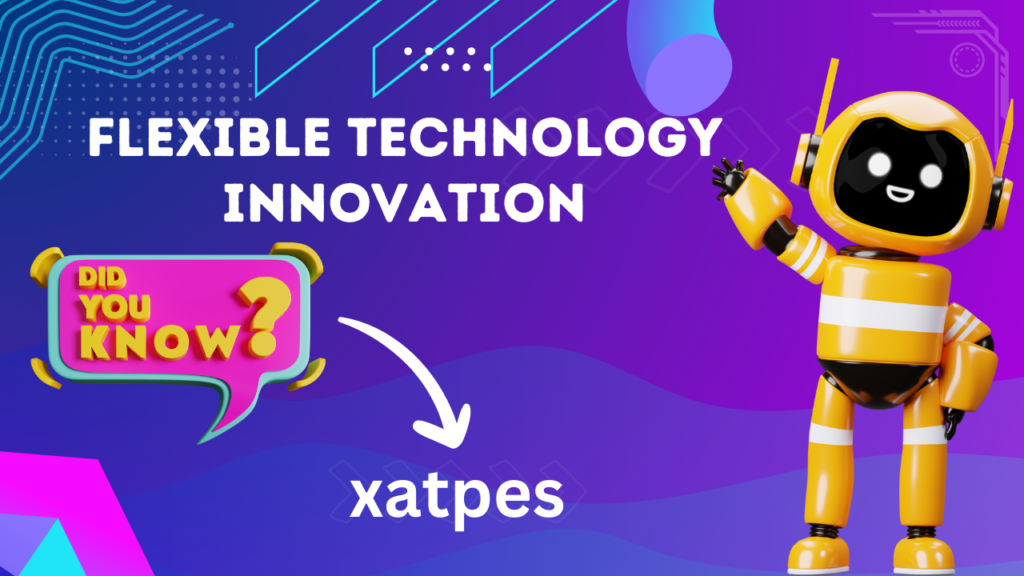Introduction:
In today’s era of technological advancement, Xatpes stand at the forefront of innovation, promising to revolutionize industries and redefine the way we interact with artificial intelligence. In this guide, we embark on an in-depth exploration of Xatpes, from their fundamental principles to their real-world applications and future potential.
Understanding Xatpes:
- Defining Xatpes:
Xatpes, or eXtended Adaptive Technology Processing Systems, are advanced AI systems designed to process and analyze vast amounts of data with adaptability and efficiency. They leverage sophisticated algorithms and adaptive learning mechanisms to mimic human cognitive processes and adapt to changing environments.
- Core Principles:
At the core of Xatpes lie principles of adaptability, scalability, and self-learning. These systems continuously refine their algorithms based on feedback loops, enabling them to improve performance and adapt to new tasks and environments.
The Evolution of Xatpes:
- Historical Origins:
Xatpes, rooted in AI and ML research, has evolved with computational power, algorithms, and data access. Advancements in these areas have driven its growth. From its origins, eXtended Adaptive Technology Processing Systems has matured, benefiting from enhanced capabilities and resources, shaping its trajectory in artificial intelligence and machine learning fields.
- Key Milestones:
Xatpes has witnessed pivotal advancements, marked by strides in deep learning algorithms, innovative neural network architectures, and the widespread adoption of big data technologies. These milestones have propelled its journey, shaping its trajectory within artificial intelligence and machine learning domains, driving innovation and progress in the field.
- Recent Advancements:
Recent strides in eXtended Adaptive Technology Processing Systems technology encompass notable progress in natural language processing, computer vision, and reinforcement learning. These advancements empower novel applications across diverse domains, unlocking transformative capabilities. With continuous innovation in these areas, eXtended Adaptive Technology Processing Systems continues to revolutionize industries, driving forward the frontiers of AI and machine learning.
How Xatpes Work:
- Technological Framework:
Xatpes operate on a distributed computing framework, utilizing clusters of interconnected processors to handle data processing tasks in parallel. This architecture allows eXtended Adaptive Technology Processing Systems to scale horizontally, accommodating large-scale data processing requirements.
- Data Processing Mechanisms:
Xatpes employ a combination of supervised and unsupervised learning techniques to process and analyze data. Supervised learning involves training eXtended Adaptive Technology Processing Systems on labeled datasets, while unsupervised learning involves identifying patterns in unlabeled data.
Applications Across Industries:
- eXtended Adaptive Technology Processing Systems in Business:
In the business realm, eXtended Adaptive Technology Processing Systems are revolutionizing operations, from predictive analytics and demand forecasting to customer relationship management and supply chain optimization.
- Healthcare Innovations:
eXtended Adaptive Technology Processing Systems are driving innovations in healthcare, facilitating disease diagnosis, treatment optimization, and personalized medicine through advanced data analysis and predictive modeling.
- Educational Enhancements:
eXtended Adaptive Technology Processing Systems are transforming educational practices through personalized learning platforms, adaptive tutoring systems, and intelligent educational assistants, catering to individual learning needs and preferences.
- Entertainment and Gaming:
eXtended Adaptive Technology Processing Systems are reshaping the entertainment and gaming industry by enabling personalized content recommendations, intelligent game design, and immersive virtual experiences, enhancing user engagement and entertainment value.
Advantages of eXtended Adaptive Technology Processing Systems:
- Enhanced Efficiency:
eXtended Adaptive Technology Processing Systems streamline processes and workflows, automating repetitive tasks and reducing manual intervention, leading to increased efficiency and productivity.
- Data-Driven Insights:
eXtended Adaptive Technology Processing Systems extract actionable insights from data, enabling informed decision-making and strategic planning based on accurate, timely information.
Challenges and Considerations:
- Security Concerns:
eXtended Adaptive Technology Processing Systems raise concerns about data security and privacy, necessitating robust security measures to protect sensitive information and mitigate potential risks.
- Ethical Implications:
The use of eXtended Adaptive Technology Processing Systems raises ethical questions regarding algorithmic bias, accountability, and transparency, highlighting the importance of ethical AI deployment and governance.
- Integration Challenges:
Integrating eXtended Adaptive Technology Processing Systems into existing systems and workflows may pose challenges such as compatibility issues, data interoperability, and organizational resistance, requiring careful planning and implementation strategies.
The Future of Xatpes:
- Emerging Trends:
Emerging trends in eXtended Adaptive Technology Processing Systems include advancements in autonomous systems, edge computing, and federated learning, which are poised to unlock new opportunities for innovation and growth.
- Industry Impact:
Xatpes will continue to impact various industries, driving digital transformation, accelerating innovation, and reshaping business models to meet evolving market demands.
- Research and Innovation:
Ongoing research initiatives focus on enhancing eXtended Adaptive Technology Processing Systems’ capabilities, addressing challenges, and exploring new frontiers, paving the way for continued advancement and discovery in AI technologies.
Real-World Examples and Case Studies:
- Success Stories:
Examples of successful eXtended Adaptive Technology Processing Systems implementations include virtual assistants, predictive maintenance systems, and fraud detection algorithms. These success stories demonstrate the tangible benefits of eXtended Adaptive Technology Processing Systems across different domains.
- Case Studies:
Case studies provide in-depth analyses of specific eXtended Adaptive Technology Processing Systems projects, highlighting challenges, solutions, and outcomes. They offer valuable insights for organizations considering eXtended Adaptive Technology Processing Systems adoption.
Navigating the eXtended Adaptive Technology Processing Systems Landscape:
- Tips for Adoption:
Organizations embarking on eXtended Adaptive Technology Processing Systems adoption should start with a clear understanding of their objectives, capabilities, and limitations. They should also invest in talent development and create a culture that embraces AI innovation.
- Best Practices:
Best practices for eXtended Adaptive Technology Processing Systems adoption include prioritizing data quality and integrity, fostering interdisciplinary collaboration, and staying abreast of technological advancements and regulatory developments.
Conclusion:
Xatpes represent a paradigm shift in the way we harness the power of artificial intelligence to solve complex problems, drive innovation, and create value across industries. As we navigate the evolving landscape of Xatpes, it is essential to embrace their potential while addressing challenges and ethical considerations to ensure responsible and impactful deployment in the years to come. With careful planning and strategic implementation, organizations can leverage Xatpes to gain a competitive edge, deliver value to stakeholders, and shape the future of AI-driven innovation.

